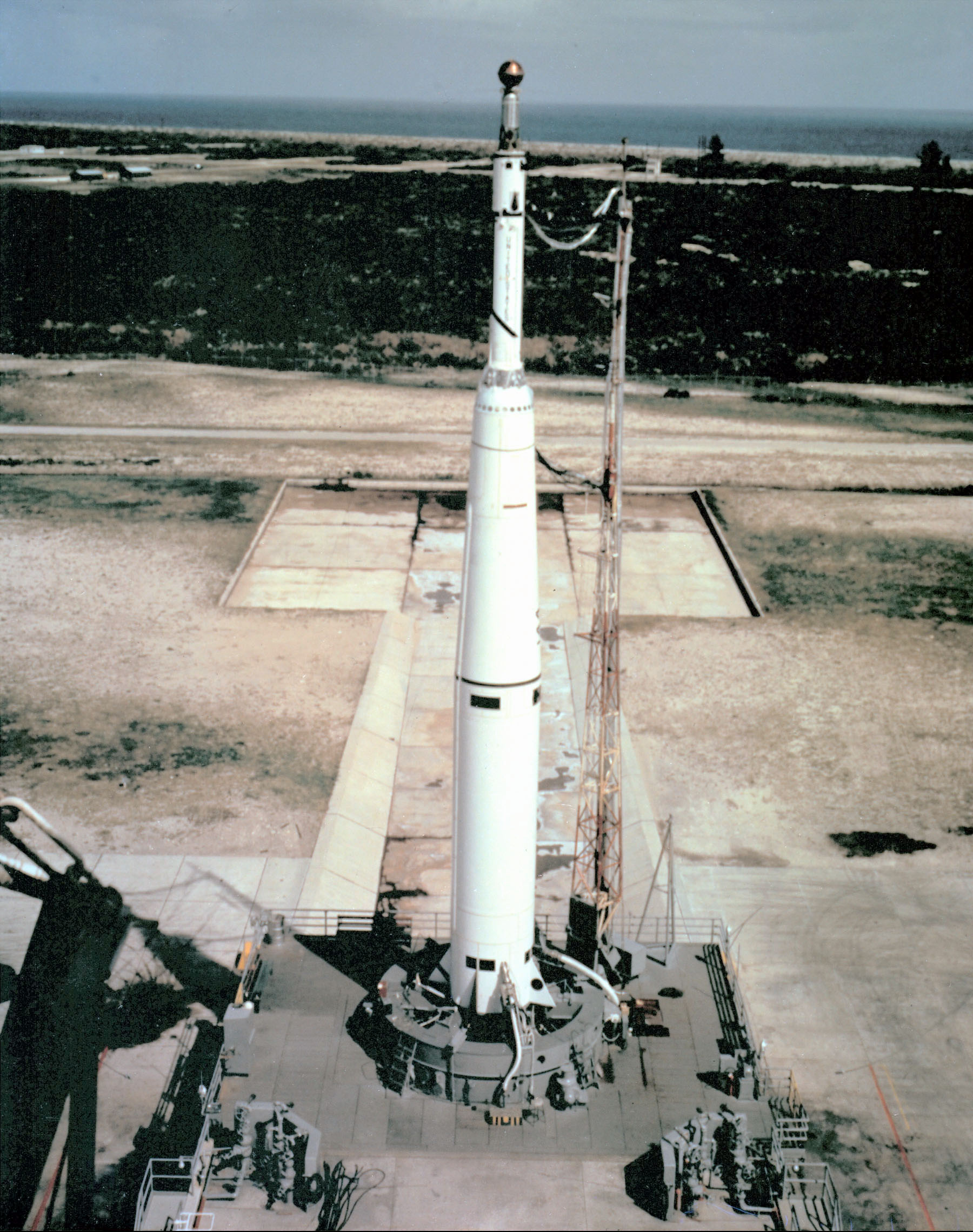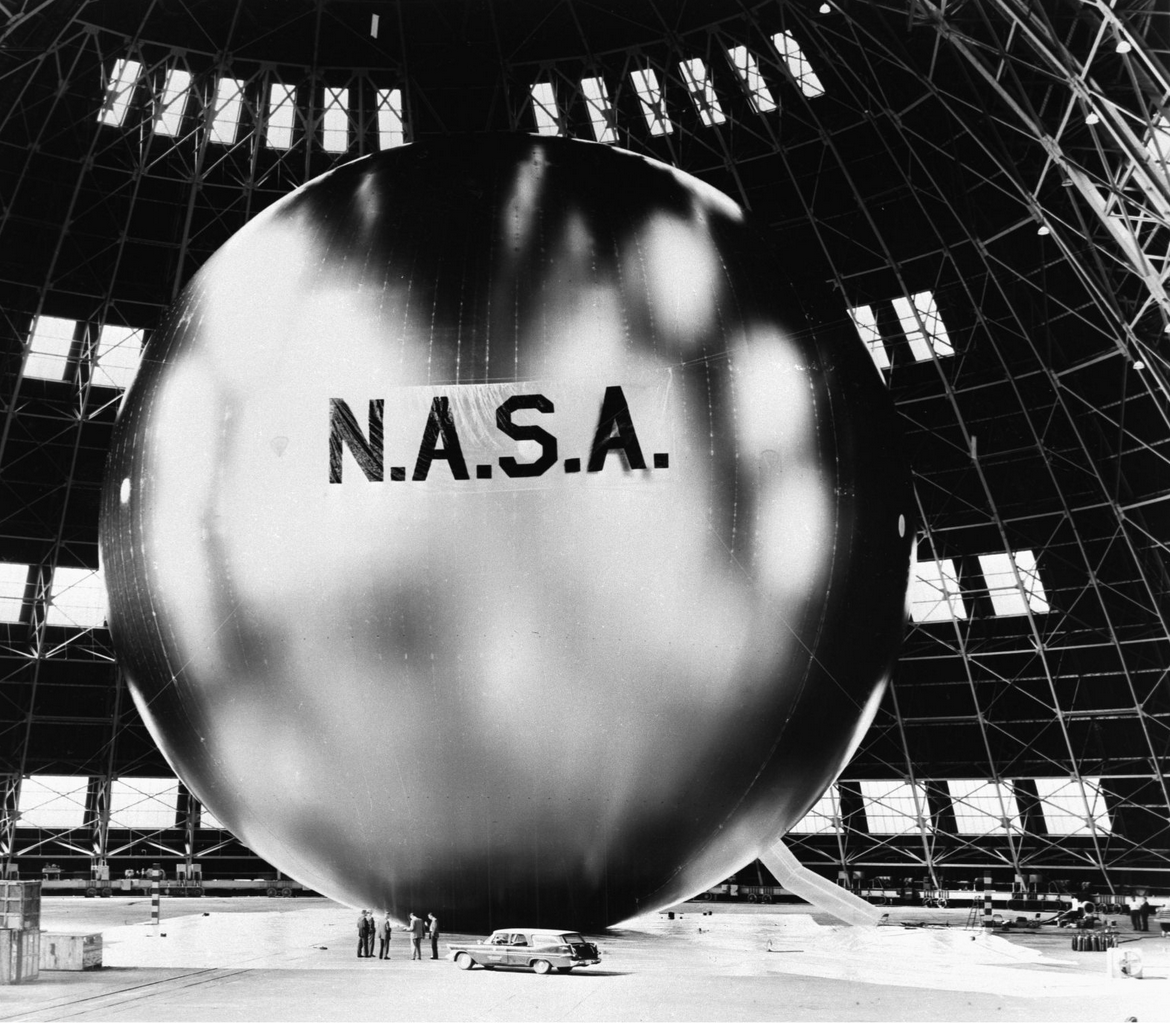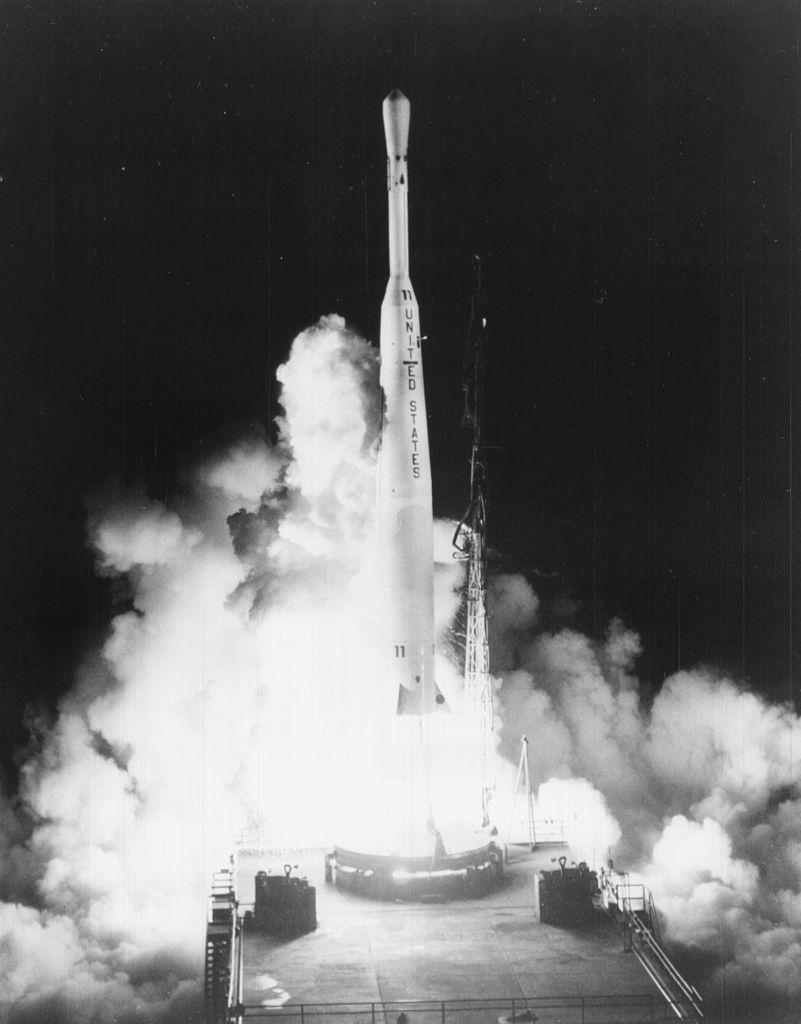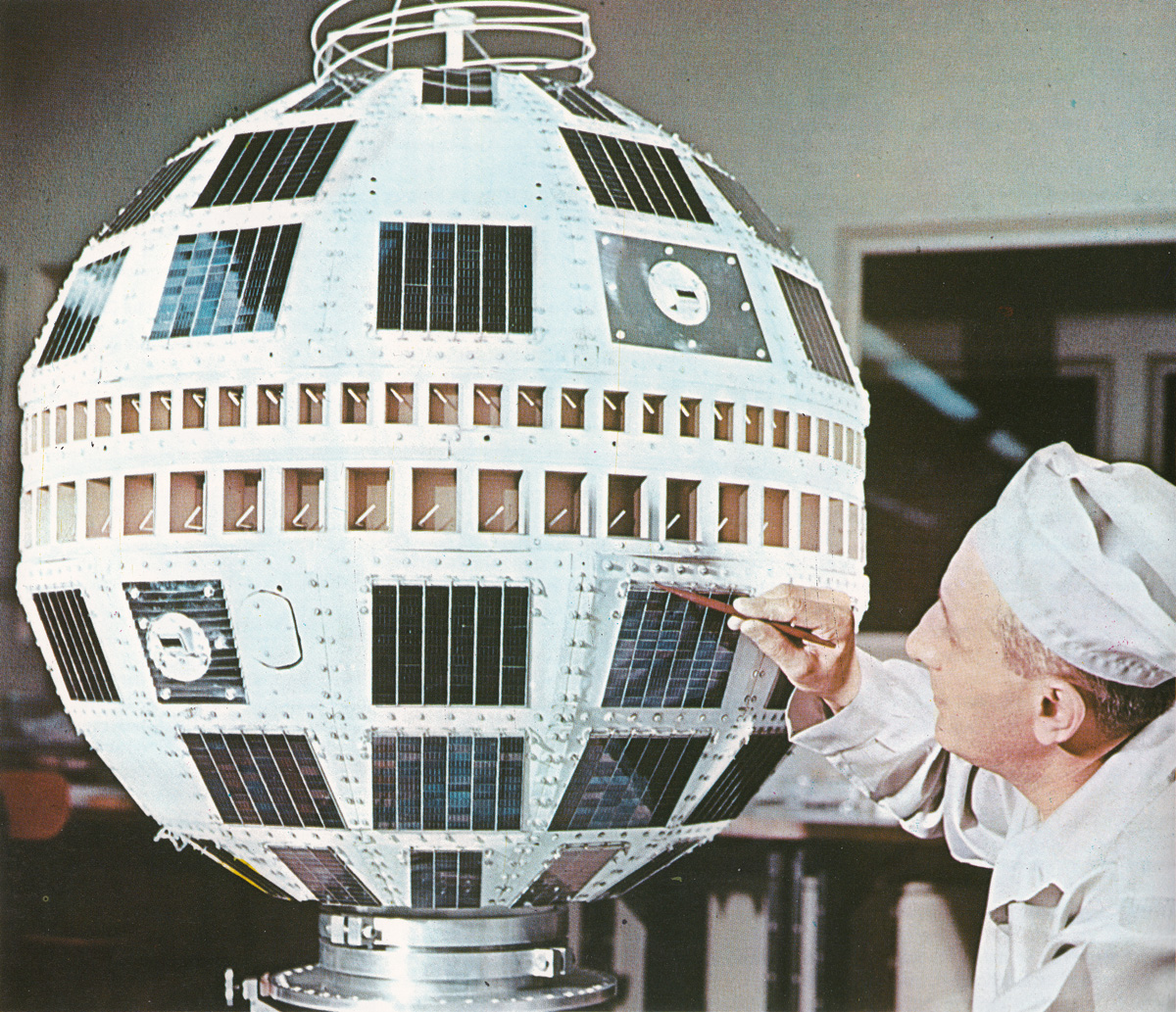
12 August 1960: At 5:39:43 a.m., Eastern Daylight Savings Time, the Echo 1A experimental passive communications satellite was launched from LC-17A at Cape Canaveral Air Force Station, Florida. The launch vehicle was a Thor-Delta three stage rocket. It entered a nearly circular 944 mile × 1,048 mile orbit (1,519 × 1,687 kilometers). The orbital period was 118.3 minutes.
The satellite was a 100 foot diameter (30.48 meter) Mylar polyester balloon with a reflective surface. The material was just 0.0127 millimeters thick. The mass of the satellite was 66 kilograms (145.5 pounds). In orbit, the balloon envelope was kept inflated by gas from evaporating liquid. It had been constructed by the G.T. Schjeldahl Company, Northfield, Minnesota. This was the second Echo satellite. The first had failed to reach orbit when launched 13 March 1960.
Later the same day, a microwave transmission from the Jet Propulsion Laboratory, Pasadena, California, was reflected off the Echo 1A satellite and received at the Bell Laboratories, Homdel, New York.
According to NASA, “The success of Echo 1A proved that microwave transmission to and from satellites in space was understood and demonstrated the promise of communications satellites. The vehicle also provided data for the calculation of atmospheric density and solar pressure due to its large area-to-mass ratio. Echo 1A was visible to the unaided eye over most of the Earth (brighter than most stars) and was probably seen by more people than any other man-made object in space.”
Echo 1A remained in Earth orbit until 24 May 1968.


Designated Thor DM-19, the first stage was 60.43 feet (18.42 meters) long and 8 feet (2.44 meters) in diameter. Fully fueled, the first stage had a gross weight of 108,770 pounds (49,337 kilograms). It was powered by a Rocketdyne LR-79-7 engine which burned liquid oxygen and RP-1 (a highly-refined kerosene rocket fuel) and produced 170,565 pounds of thrust (758.711 kilonewtons). This stage had a burn time of 2 minutes, 45 seconds.
The second stage was an Aerojet General Corporation-built Delta 104. It was 19 feet, 3 inches (5.88 meters) long with a maximum diameter of 4 feet, 6 inches (1.40 meters). The second stage had a gross weight of 9,859 pounds (4,472 kilograms). It used an Aerojet AJ10-104 rocket engine which burned a hypergolic mixture of nitric acid and UDMH. The second stage produced 7,890 pounds of thrust (35.096 kilonewtons) and burned for 4 minutes, 38 seconds.
The third stage was an Alleghany Ballistics Laboratory Altair 1. It was 6 feet long, 1 foot, 6 inches in diameter and had a gross weight of 524 pounds (238 kilograms). This stage used a solid-fuel Thiokol X-248 rocket engine, producing 2,799 pounds of thrust (12.451 kilonewtons). Its burn time was 4 minutes, 16 seconds.
© 2016, Bryan R. Swopes

